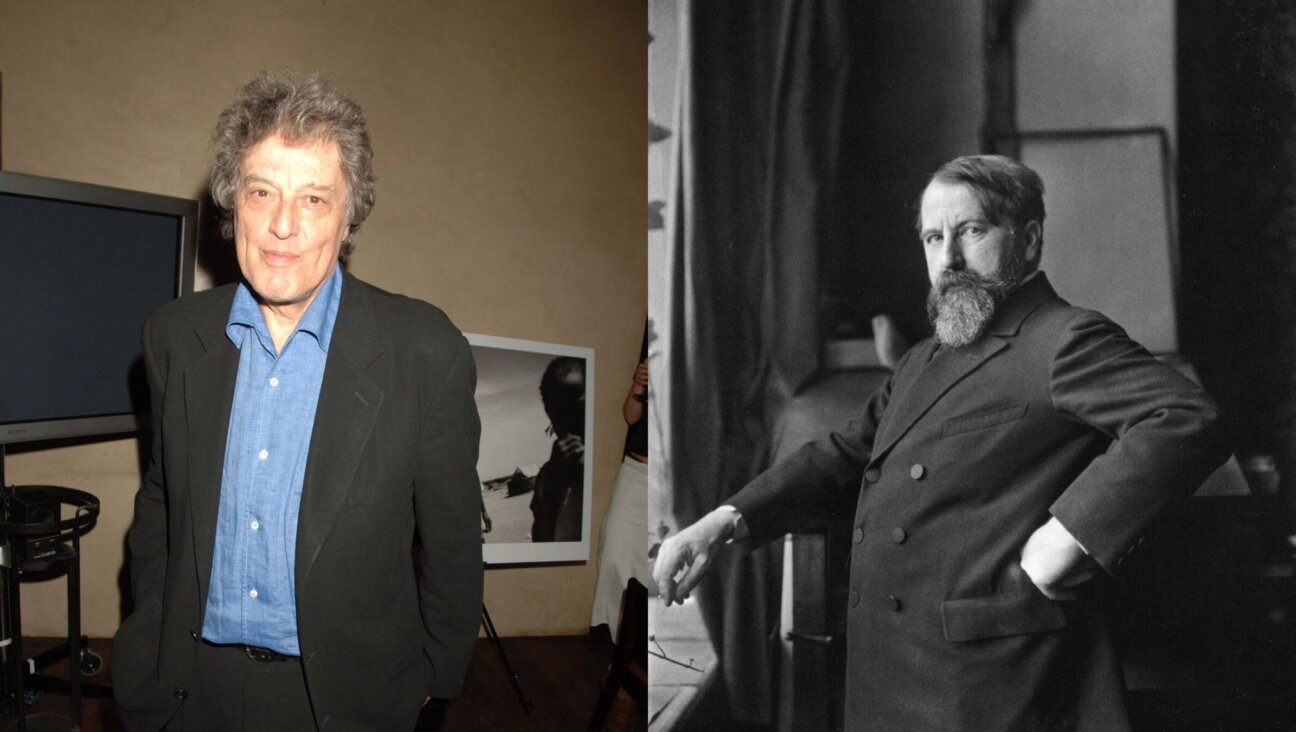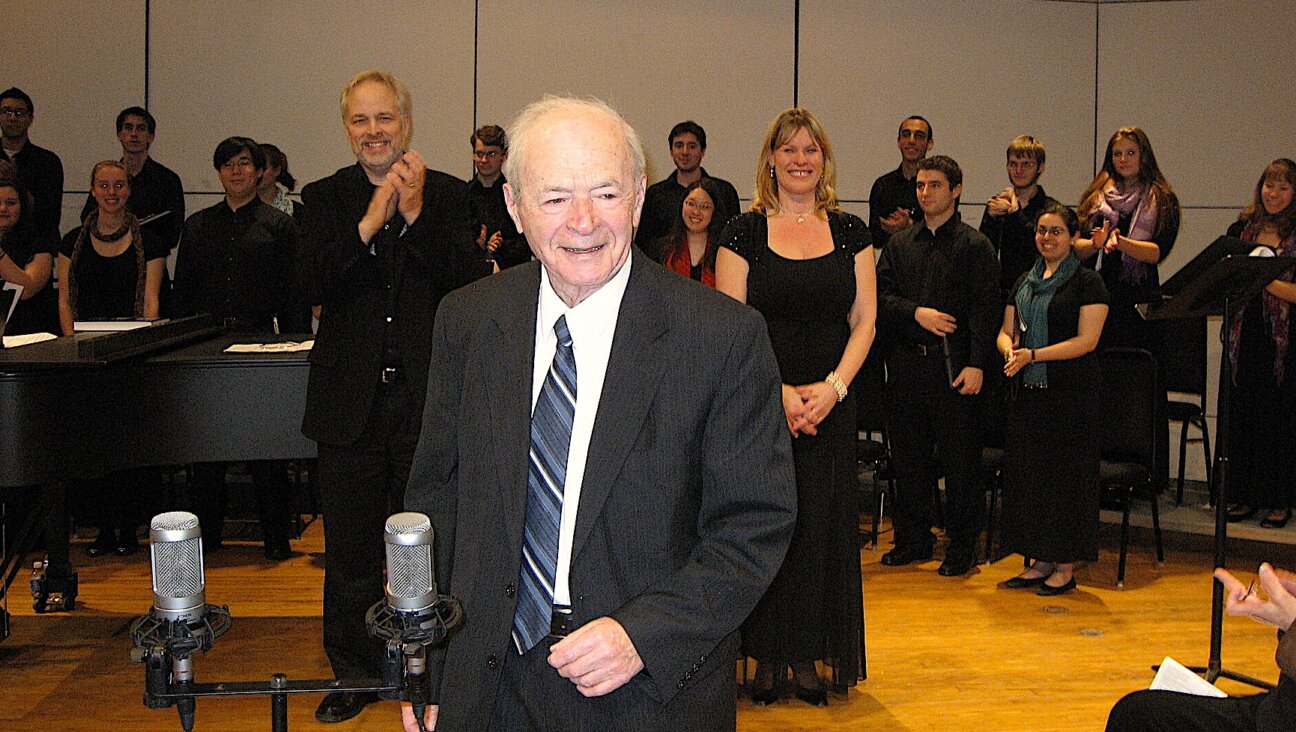Across the Boundaries of Language
Call It English: The Languages of Jewish American Literature
By Hana Wirth-Nesher
Princeton University Press, 256 pages, $39.50.
* * *|
As we enter a world that will forever remain “multicultural,” the borders of our languages have become easier than ever to cross. Paradoxically, to understand all of what is said and what is written today — especially in English — one must keep vigilantly current, not just within one’s own community but also within the googolplex world. Though Germany is not known for its beaches, in Berlin one may “gesurf” the Internet. In post-communist Moscow, the best bars are described as “elitny,” a corruption of the English “elite.” Of course, Eliezer Ben Yehudah’s Hebrew admitted many words from many different cultures (and alphabets) long before most notions of the computing revolution. But perhaps the richest origin of this culture of bebabbled Babel is to be found in the literature of Jewish America.
Hana Wirth-Nesher, author and editor of such invaluable works as “The Cambridge Companion to Jewish American Literature,” has just released the new “Call It English: The Languages of Jewish American Literature,” the most learned engagement yet with the languages that tongue at the language you’re reading right now.
The book’s title contains its entire essence. A pun to the initiated predicated on a familiarity with Galician-born Henry Roth’s 1934 monumental “Call It Sleep,” much of the book is concerned with the punning of writers who, like Roth, were born into cultures in which English (or, as the French say when they translate our literature, American) was not the primary tongue. These writers include the Forward’s own Lithuanian-born Abraham Cahan, Russian American memoirist Mary Antin (who famously quipped, “I learned at least to think in English without an accent”) and three writers who would mastermind the American Jewish experience, the freewheeling Nobel laureate Saul Bellow, neurotically sensual Philip Roth and quieter, more mystically inclined Bernard Malamud.
“Call It English” divides less by generation than by predicament: After we are given analyses of the work of writers who unconsciously inherited European languages like Yiddish, German and Russian — having been born overseas, or born here to immigrant families —Wirth-Nesher parses the writing of the generation of elective affinity, those writers whose American and English-language identity has been firmly established since birth. For writers who were born into a language other than the one in which they write, and even for writers who cannot claim any lost tongue as native but who anyway identify with and attempt to live within the conceits of its culture, writing is revealed as an effort of translation. And not just the universal translation in which a writer strives to render thoughts into words, but one in which a writer attempts to transmute the world of a culture into a context much broader: in the case of the immigrant experience, into what Henry Roth famously called “Englitch” — glitches and all.
What is most redeeming about this book is that, despite its portentous subtitle, it isn’t just preoccupied with the surfaces of the texts but rather engages the more global idea of what constitutes the translation of experience itself. For example, in “Call It Sleep,” Henry Roth describes the father of one of his characters as a “servant” and writes that “in rainy weather he carried two children on his back to cheder [school].” In the manuscript, Roth had compressed this explanation into its essence and called this man by the Yiddish term belfer. “No image,” Wirth-Nesher touchingly writes, “could capture the paramount importance of Hebrew literacy in Jewish culture more than this one of male assistant teachers fetching toddlers from their homes and toting them on their backs and in their arms for their lessons.” But when, through the Diaspora, the audience’s familiarity with this world disappears, experience must be unpacked, and explained. As Wirth-Nesher writes, the substitution of “servant” for “belfer” is an admission that aspects of the Old World are untranslatable into the languages of America. And so the footnotes begin.
After this pronouncement, Wirth-Nesher leaves Roth and confronts Saul Bellow — most notably his landmark translation of Isaac Bashevis Singer’s “Gimpel the Fool” into the famous English that explains but doesn’t talk down, the easy and folksy idiom that simplifies without destroying or sentimentalizing the homily that is the soul of that wonderful tale. Following Bellow and his Singer is a discussion of Cynthia Ozick, a next-generation Hebraist who seems to have the kind of metaphysical reservations about her native tongue that are the privilege only of the native born. Later we are given analyses of the work of the generation that includes Tony Kushner and Aryeh Lev Stollman, with passing nods made to the millennial promise of the group that includes Jonathan Safran Foer and Myla Goldberg, who are regarded as archivists — less participants than observers of Jewish American flux.
The grievance of omission is the most artless to voice. Still, it is difficult to accept Wirth-Nesher’s treatment of early avant-garde and socialist writers like Cahan and Henry Roth, only to witness her accede to the mainstream of publishing of the last few generations. This is a shame, because the greatest linguistic successes in Jewish American writing came just after the heyday of assimilationist mid-century, with the prose of such native Yiddish speakers as Leonard Michaels and Stanley Elkin mirrored in poetry in the contemporaneous project of the late modernist and later Language poets, whose Jewish ranks included such notables as Louis Zukofsky, Jackson Mac Low and Charles Bernstein. Also conspicuously missing from “Call It English” is a glass raised to the Russians who have recently occupied America’s Jewish literary landscape. Among them are Lara Vapnyar, author of “There Are Jews in My House,” and Gary Shteyngart, whose “Russian Debutante’s Handbook” reads best less as a novel than as a literal handbook of cultural displacement.
Though Wirth-Nesher brings her book to an end with a Kaddish, it is not a Kaddish for Jewish American literature. Rather, hers is an analysis of how Jewish American writers (and their American readers, Jewish and not) have transformed the Kaddish into a prayer of mourning, a requiem directed at the Holocaust and the experience of immigrant suffering, as opposed to the formula affirming faith in God that it has been since its inception. Dramatically staging graveside scenes at which the Kaddish is said in memoriam, Jewish American writers have restaged Jewish life; demonstrating that in Philip Roth’s Newark, in Bellow’s Chicago and beyond, writers who write in Jinglish (jingly-jangling Jewish-English), or even in Yinglish, Ameriddish, Jamerican or whatever they want to call it, are doing much more then merely chronicling or commenting on the experience of Jews in America. Word by word, they are creating it. Long may they continue to do so.
Joshua Cohen is the author of “The Quorum”(Twisted Spoon Press, 2005) and of the forthcoming “Cadenza for the Schneidermann Violin Concerto” (Fugue State Press).
















